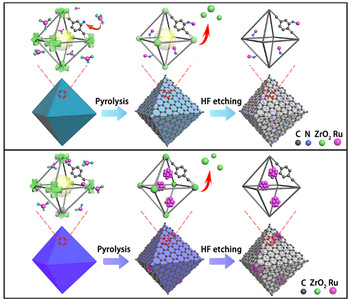Uncoordinated Amine Groups of MOFs to Anchor Single Ru Sites as Chemoselective Catalysts toward the Hydrogenation of Quinoline
In recent years, atomically dispersed single site catalysts have attracted extensive attention due to their maximum atom utilization, superior catalytic activity, and excellent selectivity. These single atom catalysts act as an ideal model system that can potentially bridge the gap between heterogeneous and homogeneous catalysis. The catalytic performance of the single atom catalysts is highly dependent on their structures, such as coordination ligands, dispersion gesture, and the interactions with supports.Prof. Yuen Wu’ (USTC) and Prof. Yadong Li’s (Tsinghua University) groups report a new strategy for constructing noble metal single atom catalysts by using MOFs as precursors for the first time. An isolated single ruthenium site supported on nitrogen-doped porous carbon (Ru SAs/N-C) catalyst was successfully prepared using this strategy, and served as a semi-homogeneous catalyst to effectively catalyze chemoselective hydrogenation of functionalized quinolones. Photoemission spectroscopy experiments and Near Edge X-ray Absorption Fine Structure (NEXAFS) were carried out at the Catalysis and Surface Science Endstation at the BL11U beamline and Photoemission endstation at the BL10B beamline in the National Synchrotron Radiation Laboratory (NSRL). This work was published in J. Am. Chem. Soc. (J. Am. Chem. Soc. 2017, 139, 9419−9422).

Scheme of the proposed formation mechanisms for Ru SAs/N-C (top) and Ru NCs/C (bottom)
Back

